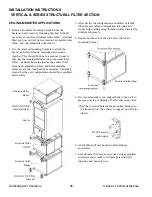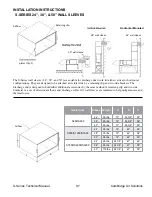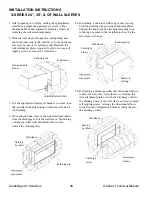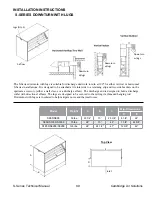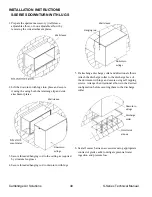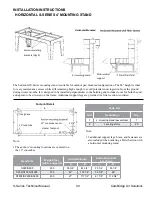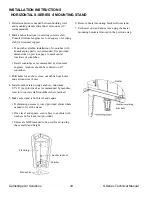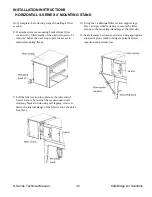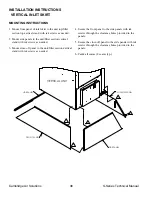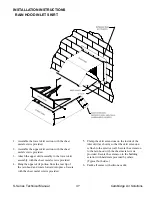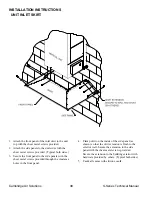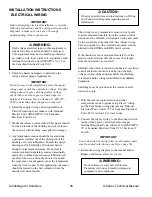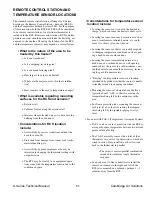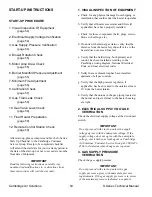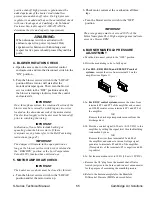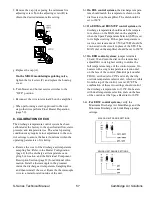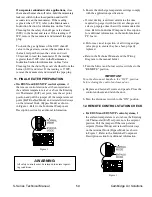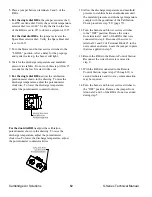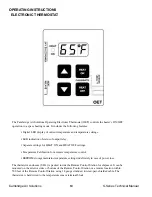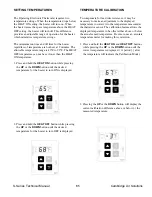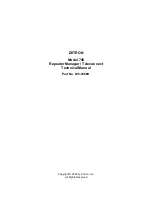
Cambridge Air Solutions
50
S-Series Technical Manual
INSTALLATION INSTRUCTIONS
ELECTRICAL WIRING
IMPORTANT
Before attempting electrical installation, review the
following instructions and the wiring and connection
diagrams to make sure you have a thorough
understanding of the requirements.
m
WARNING:
High voltage electrical input to this equipment is
required. Extreme caution should be exercised.
This equipment must be electrically grounded in
accordance with local codes or in accordance with
National Electrical Code ANSI/NFPA No. 70 or
the Canadian Electrical Code C22.1.
1. Check the heater nameplate to determine the
voltage and amperage requirements.
IMPORTANT
Do not proceed with installation unless the supply
voltage agrees with the nameplate voltage. If supply
voltage does not agree with nameplate voltage,
check with your local agent or Cambridge Air
Solutions' Customer Service Group at
1-800-473-
4569
to determine what changes are required.
2. Install the supply wiring and adequate Branch
Circuit Protection in accordance with National
Electric Code ANSI/NFPA 70 or Canadian
Electrical Code C22.1.
3. Mount the remote control station. This panel should
be located inside of the building and convenient to
the operator without being susceptible to damage.
4. Any temperature sensors should be located along
a perimeter wall and out of the direct path of the
discharge air or air infiltration. Consult the design
drawing and/or Cambridge’s Customer Service
Group for placement assistance. Do not locate
remote mounted temperature sensors immediately
adjacent to overhead doors because infiltration air
can affect the sensor when the door is closed and
the sensor may not adequately sense the temperature
when the door is open. In this application, the sensor
should be located on the first column in from the
outside wall when feasible.
m
CAUTION:
Observe special notes and instructions on Wiring
and Connection Diagrams regarding sensor
installation:
The wiring for any temperature sensors or set point
controls mounted remotely from the remote control
station must be shielded, twisted-pair wiring and must
be run separately from other AC line voltage wiring.
This also applies to other remotely mounted controls
utilized in the EDSM and EDR control systems.
If the thermistor is not mounted remotely from the
remote control station, trim the excess wire length
from the thermistor, as required.
Shielded wire which is routed to the heater’s electrical
control enclosure should extend beyond the high
voltage section of the enclosure before the shielding
is removed and the wiring is distributed to its ultimate
destination.
Shielding must be grounded at the remote control
station end only.
5. Wire the remote control station and other
temperature control options using Class 2 wiring
per the Cambridge wiring diagram and National
Electrical Code Article 725 or Canadian Electrical
Code C22.1 section 16 or local codes.
6. Connect the supply wiring to the disconnect switch
inside of the heater’s electrical enclosure per
National Electrical Code, Article 430, ANSI/NFPA
70 or Canadian Electrical Code C22.1 Sections 12
and 28.
IMPORTANT
Power and control wiring inlets on all outdoor units
must be sealed with silicone caulk (see page 56).
7. Return the wiring diagram to the manual holder.
Replace and fasten all access covers.
m
WARNING:
Do not attempt to start unit at this time.
Premature start-up can result in damage to
equipment and components.

